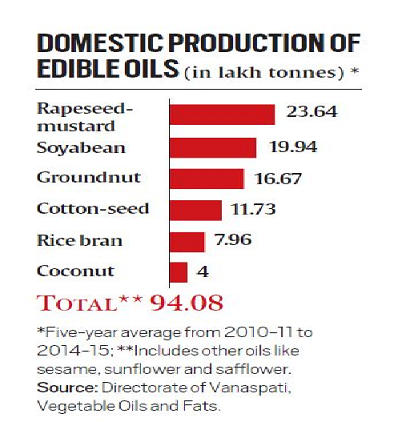Table of Contents
Yellow Revolution: The Yellow Revolution Launched in 1986-87, aimed to boost India’s edible oilseed production, particularly mustard and sesame, to achieve self-sufficiency. Nicknamed after the golden hues of these crops, it targeted nine oilseeds including groundnut, soybean, and sunflower. Led by Sam Pitroda, the initiative focused on introducing high-yielding varieties, expanding farmland dedicated to oilseeds, and promoting modern agricultural practices.
While achieving complete self-reliance proved elusive, the Yellow Revolution did succeed in doubling oilseed production within a decade. This not only reduced dependence on imports but also empowered farmers and strengthened rural economies. Although challenges like market volatility and inadequate storage persist, the Yellow Revolution remains a significant milestone in India’s agricultural journey.
What is Yellow Revolution?
The initiative launched between 1986 and 1987 to boost the production of edible oil, particularly mustard and sesame seeds, aiming for self-sufficiency, is referred to as the Yellow Revolution. Sam Pitroda is credited as the driving force behind the Yellow Revolution in India. This revolution focuses on nine oilseeds, namely groundnut, mustard, soybean, safflower, sesame, sunflower, niger, linseed, and castor.

History of Yellow Revolution in India
In 1986, India launched the “Oil Technological Mission” to ensure the success of the Yellow Revolution. This initiative introduced several hybrid seeds of mustard and sesame to significantly increase edible oil production.
Here are the Positive Aspects of the Yellow Revolution:
- The adoption of improved oil production technology led to a remarkable increase in sunflower production in Punjab, India.
- The revolution created new opportunities, contributing to socioeconomic growth and reducing disparities in the country.
- India’s oil production rate surged from 12 million tonnes at the onset of the revolution to 24 million tonnes within a decade.
- Farmers embraced hybrid oilseeds to elevate total oil production in India, accompanied by an expansion in land usage to approximately 26 million hectares.
- Modern technologies were employed by farmers to enhance the production of oilseeds.
Features of Yellow Revolution
- The Yellow Revolution provided farmers with free fertilizers, insecticides, and other essential products to boost seed production.
- Additional facilities such as transportation and storage were also extended to farmers, crucial for the success of the revolution.
- Various boards like the National Dairy Board and National Oilseeds and Vegetable Oils Development Board were established to enhance seed production.
- The Oilseeds Production Thrust initiative aimed to increase the production of four main oilseeds: mustard, groundnut, soybean, and sunflower.

- Over 3,000 oilseed societies were formed with the efforts of 1.3 million farmers, utilizing 25 hectares of land in India.
- India achieved self-reliance in oilseed production in the last decade due to the Yellow Revolution.
- Following the Yellow Revolution, India began importing oilseeds from countries like Malaysia, Argentina, and Brazil to meet the demand.
Issues Related to Yellow Revolution
- Decrease in Edible Oil Supply: More edible oil is needed because it’s hard to increase the land available for farming.
- Decrease in Production Areas: The land used to grow oilseeds has decreased a lot because people aren’t aware of their importance, and farming methods have changed.
- Unique Oil Compositions: Many oilseeds have special oils that are in demand for eco-friendly products.
- Adaptability to Climate: Oil crops can grow in various climates across India because they have different needs.
- Lower Productivity: Oilseeds don’t produce as much because they get sick easily and bugs bother them.
- Declining Environment: The quality of the land for growing oilseeds is getting worse, which is hurting production.




 TSPSC Group 1 Question Paper 2024, Downl...
TSPSC Group 1 Question Paper 2024, Downl...
 TSPSC Group 1 Answer key 2024 Out, Downl...
TSPSC Group 1 Answer key 2024 Out, Downl...
 UPSC Prelims 2024 Question Paper, Downlo...
UPSC Prelims 2024 Question Paper, Downlo...




